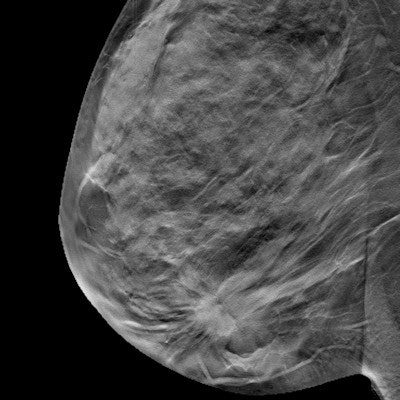
Digital breast tomosynthesis (DBT) performs as well as or better than full-field digital mammography (FFDM), even when patient characteristics that might skew toward DBT exams are accounted for, according to a study published online June 22 in the American Journal of Roentgenology.
The finding is good news for practices that are using both technologies for breast cancer screening: Radiologists can rest assured that DBT and FFDM are comparable, even among women of average risk, wrote a team led by Dr. Catherine Giess of Brigham and Women's Hospital.
 Dr. Catherine Giess from Brigham and Women's Hospital.
Dr. Catherine Giess from Brigham and Women's Hospital."After controlling for differences in the patient populations undergoing DBT compared to full-field digital mammography -- differences that could affect cancer detection rates -- our research shows that DBT finds more cancers, particularly invasive ones," Giess told AuntMinnie.com.
Apples to apples
Previous studies comparing DBT with FFDM in screening populations have been conducted in mixed imaging environments in which some patients underwent DBT and others FFDM. The problem with this approach is that differences in patient populations may compromise these results, according to the researchers. For example, if women with abnormalities on prior mammograms or with dense breast tissue more frequently underwent DBT, this could result in a higher cancer detection rate for the technology due to factors other than its inherent performance.
"The possibility of selection bias, in which there may be differences in the risk of breast cancer between patients undergoing DBT versus FFDM, complicates comparisons of clinical effectiveness of the two imaging technologies," Giess and colleagues wrote.
To avoid this bias, the researchers used propensity scoring -- a statistical technique that estimates the effect of an intervention by accounting for the factors that predict receiving it -- to match patients between the two modalities. They included 37,338 exams (16,264 FFDM and 21,074 DBT) taken between October 2012 and May 2015 and compared the following performance measures: recall rate, cancer detection rate, and positive predictive value for recall (PPV1).
"Propensity scoring is a fairly novel statistical method for this kind of research," Giess said. "We wanted to control for the variability of risk factors in a hybrid imaging environment -- to compare apples to apples -- and this method allowed us to do that."
Giess' team found that recall rates between the two technologies did not differ significantly, but the cancer detection rate and PPV1 were significantly higher with DBT (p = 0.005 and p = 0.006, respectively).
| FFDM vs. DBT for breast screening | ||
| FFDM | DBT | |
| Cancer detection rate per 1,000 exams | 1.8 | 3.8 |
| Invasive cancer detection rate per 1,000 exams | 1.5 | 2.9 |
| Recall rate | 10.3% | 10.7% |
| PPV1 | 1.8% | 3.6% |
In the total matched cohort, there were 63 screen-detected cancers; 26 were found on FFDM (five in situ and 21 invasive) and 37 were found on DBT (nine in situ and 28 invasive). DBT's invasive cancer detection rate was higher than FFDM's, at 2.9 per 1,000 exams versus 1.5 per 1,000 exams.
A real advance
Tomosynthesis is a real advance in mammography screening, and radiologists can use it in their practices with confidence, Giess and colleagues concluded.
"Digital breast tomosynthesis has been termed 'a better mammogram,' " the group wrote. "On the basis of our clinical experience and that of others showing a significant increase in cancer detection rate, DBT should be considered a valuable advance in breast cancer screening."



















